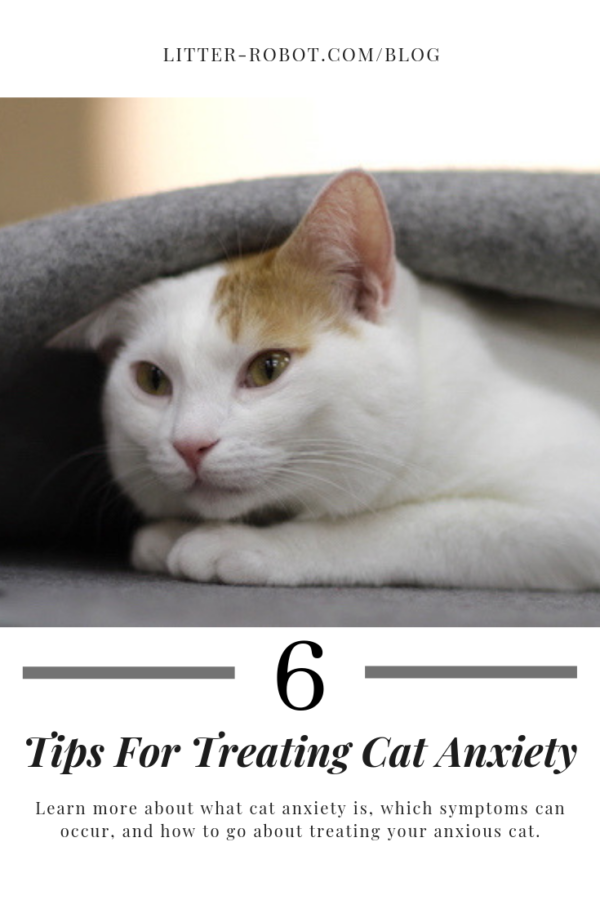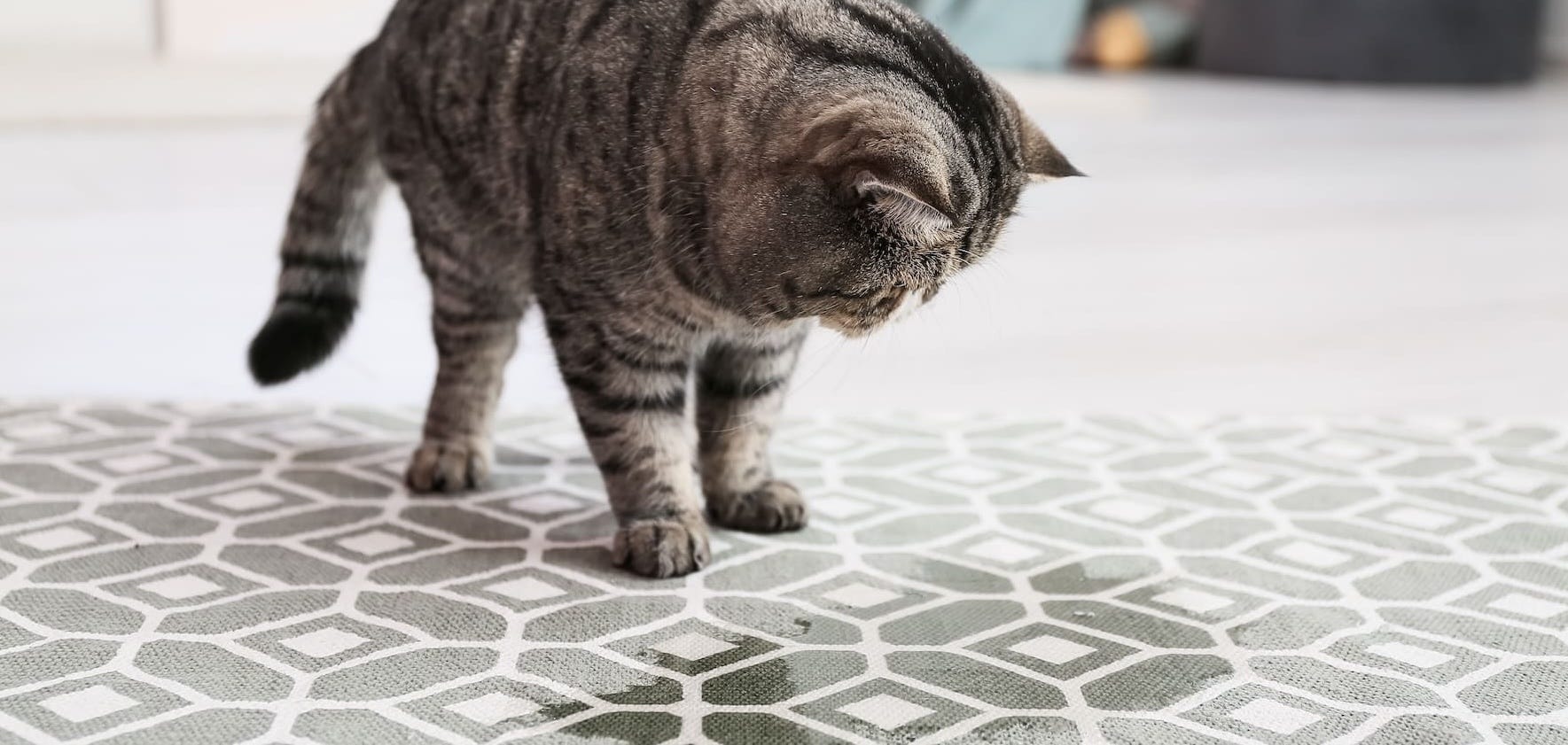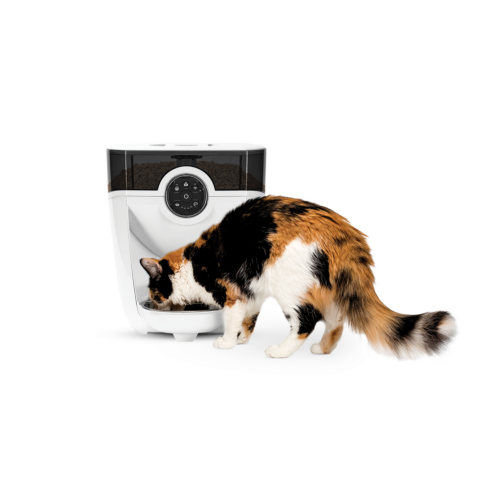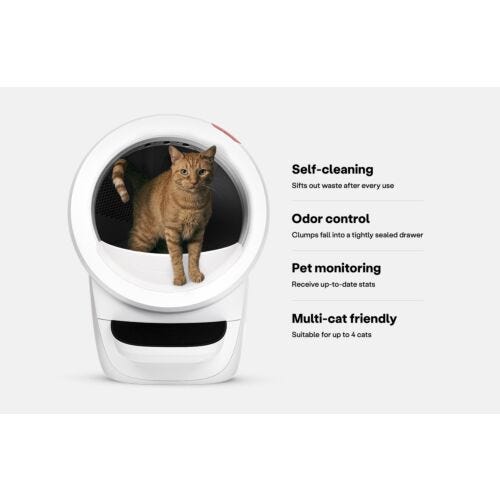Updated February 5, 2024
Do you have an anxious cat? Chances are you’ve at least encountered one in your lifetime. Anxiety is somewhat common in felines, yet often overlooked due to the wide range of symptoms that may arise. Learn more about what cat anxiety is, which symptoms can occur, and how to go about treating your anxious cat.
What is cat anxiety?
Anxiety is the manifestation of feelings of apprehension in regard to an anticipated threat or danger. Surprisingly, anxiety in cats is very common, but it often goes unnoticed and is therefore underdiagnosed.
- Have you ever known your cat to have a sharp change in behavior when presented with a specific situation, place, or thing?
- Does your cat generally have odd behaviors such as excessive grooming, hiding, extreme vigilance, or overall destructive behaviors?
Both of these situations are manifestations of anxiety. Knowing why so many cats experience anxiety and what to look for can be very helpful in determining how you can help your feline friend if they happen to experience anxiety.
What causes anxiety in cats?
Although the most common diagnosed form of anxiety in cats is separation anxiety, there are many environmental, behavioral, and health factors that may contribute to the disorder. Some common causes include:
- A past traumatic experience, such as physical abuse, neglect, abandonment, being caged for a prolonged period, etc.
- Being deprived of social and environmental exposure for the first 14 weeks of life or longer
- A change in routine or environment
- An unfamiliar environment
- A new situation, such as the introduction of a new household pet or baby
- An illness, painful physical condition, or disease such as hyperthyroidism
- Aging, which may lead to cat dementia or other nervous disorders
Cat anxiety symptoms
An anxious cat may present obvious symptoms of discomfort, but many pet parents are surprised to learn about the not-so-obvious signs. Below is a round-up of common, wide-ranging cat anxiety symptoms:
- Urinating or defecating outside of the litter box
- Changes in eating or drinking, such as lack of appetite or eating too fast
- Hiding
- Vomiting
- Diarrhea
- Inappropriate scratching or destructive behavior
- Increased aggression
- Increased submission
- Compulsive pacing
- Overgrooming, sometimes to the point of hair loss
- Excessive vocalization
How to calm an anxious cat
If you’re worried about your anxious cat, you should first make an appointment with your veterinarian to rule out possible illnesses and diseases that could be contributing to their symptoms. Following that, you’ll need to try to get to the bottom of what is causing your cat’s anxiety. From there, you can tailor your treatment plan to suit your cat’s specific needs.
Create a safe space
This works for all kinds of anxiety, including phobias. If your cat is stressed out by kids or other pets in the household, give them an opportunity to escape the commotion with a tall cat tree, window perch, or even a separate room with a cozy bed and enclosed areas. This safe space is also important for cats with noise phobias (fireworks, thunderstorms, vacuums, etc.). You might consider trying a ThunderShirt on your cat, a pressure garment said to have a calming effect similar to swaddling a baby.
Provide playtime and enrichment
Start (or continue) a daily routine of exercise and play with your cat. Even 15 minutes a day with a laser pointer or wand toy will help your cat get the exercise they need while reducing their stress. Similar to creating a safe space, you’ll want to make sure your cat has enough environmental enrichment while you’re away to stay distracted from ensuing anxieties. Keep them stimulated with catnip toys, food puzzles, cat grass, and window-watching spots.
Stick to a routine – and keep the litter box clean
An upheaval in your routine can result in anxiety in your cat. Give your cat food and water at the same time every day, and clean the litter box daily. That’s right, a common source of cat anxiety is a dirty litter box! Cats are such fastidious creatures that they don’t want to step into a dirty litter box too often—leading to urinating and defecating outside of the litter box, or potentially life-threatening lower urinary diseases. Make sure you scoop daily and follow the n+1 rule: If you have 1 cat, you need n+1 litter boxes (in other words, 2). If you have 3 cats, you need 3+1 litter boxes (a total of 4). Or, skip the scooping altogether and get an automatic, self-cleaning litter box like Litter-Robot, which always provides a clean bed of litter—great for territorial cats!
Of course, we can’t always avoid changes in schedule, so we recommend trying to ease your cat into a new routine whenever possible.
Try calming pheromone diffusers
Feliway is a natural calming pheromone that mimics your cat’s “happy” pheromones. Plug in a Feliway diffuser in any room where your cat spends a lot of time, or spray it on any spot where your cat has urinated, scratched, or engaged in destructive behavior.
Use natural calming supplements
With the rise of natural calming supplements for pets, you have your choice of many natural treatments for your anxious cat. Just be aware that not all products work for all kitties, so there may need to be a trial period to determine if any of those supplements are beneficial for your cat. Here are a few examples of common calming supplements:
- CBD: This natural compound from cannabis plants may reduce cat anxiety and comes in many varietals now, including treats, oils, and capsules. However, never give your pets regular marijuana, which contains THC.
- Bach Flower Rescue Remedy: This natural stress reliever is made from spring water infused with wild flowers. It is said to help ease an anxious pet by restoring balance between the mind and body.
- Anti-anxiety diets and treats: Ask your vet about Royal Canin Veterinary Diet Calm formula and other calming cat chews, foods or food additives.
- Herbs: Find out which herbs are safe for cats, including catnip and valerian. While these herbs might initially stimulate your cat, the resulting euphoria should leave him calm and relaxed.
Visit the vet for cat anxiety medication
If all else fails, talk to your vet about prescription cat anxiety medication. He or she may want to prescribe something more short-term like gabapentin, or a longer-time resolution such as buspirone or amitriptyline. But never give your cat human anti-anxiety medication without first checking with your vet.
Remember, treating cat anxiety will probably be a lesson in patience and trial and error. Learn to recognize what, if anything, is triggering your cat’s anxiety and try the tips listed above. Don’t be afraid to ask your vet for advice. An anxious cat deserves as much care and attention as an ill kitty.
Sources:
- Fears, Phobias, and Anxiety in Cats and Dogs
- Understanding Anxiety in Cats: Helping Cats Cope with Environmental Change | VETgirl Veterinary Continuing Education Blog
- Feline Fear and Anxiety








